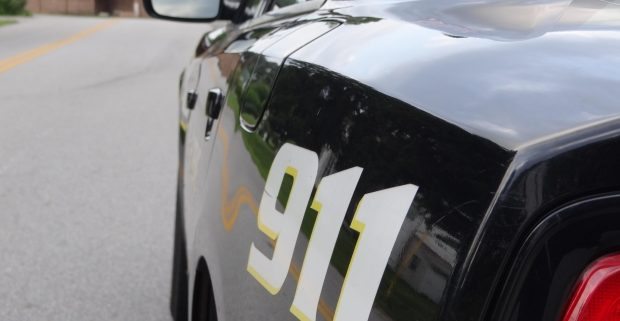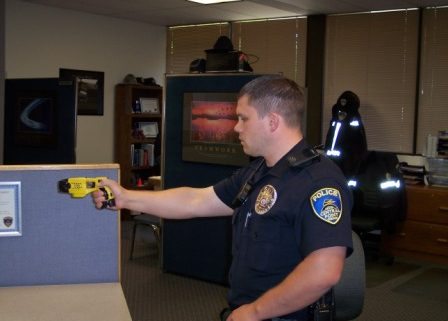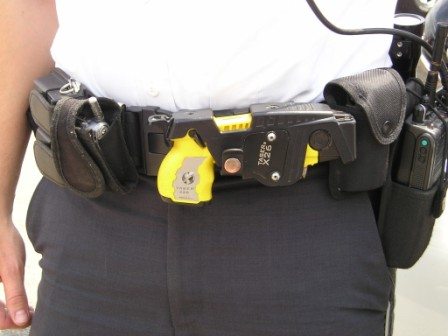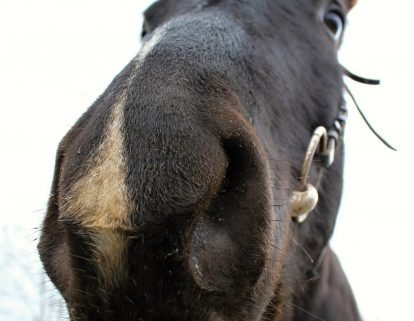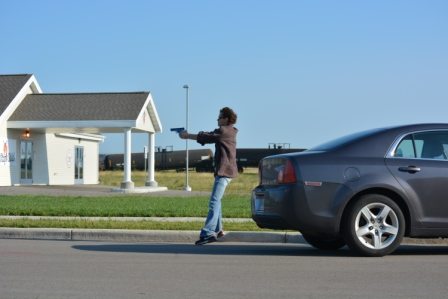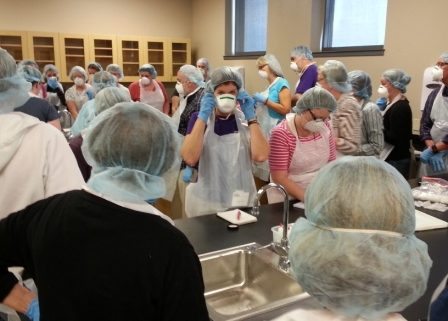Before we delve into the facts (fact – something that truly exists or actually happened) surrounding these two cases—the militia who took control of a building in a remote bird sanctuary, and the officer-involved shooting of Tamir Rice, let’s refresh our memories a bit regarding the crime of murder.
Murder – to unlawfully kill someone, or, an illegal homicide. Yes, there’s a difference between murder and homicide and here are the distinctions between the two.
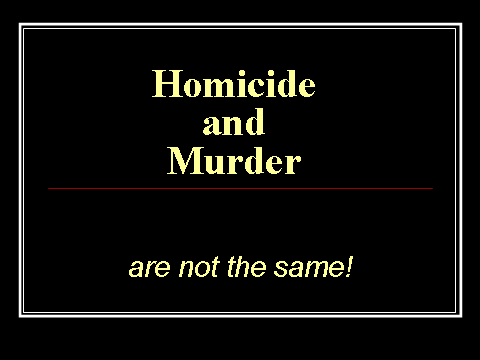
They’re not? Then why do I see this written incorrectly in so many books? What’s the difference?
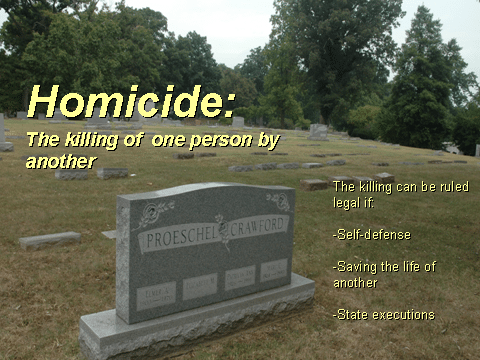
I committed homicide when I shot and killed a bank robber during a shootout. The act was ruled, of course, a justifiable homicide.
Murder is the unlawful killing of a person, especially with malice aforethought.
Okay, now that we have that firmly embedded into our open minds, let’s begin.
1. A group of ranchers seized and occupied an empty and closed-for-business building located in a remote area of the Malheur Wildlife Refuge. The structure is owned by the federal government, meaning it falls under the jurisdiction of the FBI who, of course, would be the lead investigating agency, and they are well-equipped and very well-trained to handle situations like this one. If needed, they’d call on local and state authorities, as well as other government agencies, for assistance.
2. What actual crimes have been committed by this group of armed farmers?
a) Trespassing – the group entered the government property without permission. *Remember Occupy Wall Street and the takeover of Zuccotti Park? What about the occupying and takeover of city streets and bridges by other protestors, such as the Black Lives Matter group? These are the same in that the groups took control of property that did not belong to them.
b) Breaking and Entering – I’m sure neither of the occupying ranchers had a key, therefore, they more than likely broke something to gain access. Besides, all that required to commit a B&E is to break the plane, such as climbing through a window of a place you don’t have permission to enter.
That’s about it. Other than the two crimes listed above, they’ve broken no laws. No one was there when the ranchers took control of the modest structure. No hostages. No shots fired, etc.
But, they do have guns—rifles and probably handguns, right? Well, Oregon is an open carry state, therefore the ranchers have the legal right to carry their weapons. So no crime there. And, so far they have not pointed those weapons at anyone, nor have they used them in a threatening manner.
I’m a bit shocked and appalled at the numerous cries for police to open fire and kill everyone inside the occupied building. I say shocked because the crimes committed by these guys are crimes against property, not people. Yet, when police use deadly force against a criminal who threatens their lives or the lives of others, many people scream police brutality or “They committed MURDER!!” Again, read the definition of murder above.
So, why is it okay to kill a group of ranchers who’ve thus far done no more than take over an empty building? If that’s the case should police begin the practice of using machine guns to mow down the teens who take over shopping malls, or mass extermination of members of the Black Lives Matter group when they take over city streets while chanting those sweet little ditties about killing cops? No, that’s not a civilized society. Besides, the law does not allow it. Therefore, unless the ranchers threaten the life of another person, law enforcement or citizen, deadly force CANNOT be used against them. It is not against the law to own or hold a firearm, and for now there is no life-threatening situation.
This is not a situation that unfolded in the blink of an eye, as in the case of Tamir Rice. There, when officers rolled up, Rice pulled what appeared to be a very real pistol from his waistband. One of the officers reacted to what he perceived as a threat and discharged his weapon, killing Rice.
So what are the facts of this case?
a) Officers received a radio transmission about someone in a park who was pointing a firearm at people.
b) Officers responded to the call and, upon arrival, Rice pulled the realistic-looking pistol from his waistband.
c) Officer saw the gun being drawn and fired, killing Rice.
That’s about it in a nutshell. Now, these are the facts that relate only to the shooting, not to whether or not the officers came in “too hot” and fast and close. Nor am I addressing other options that were definitely available to the officers. Instead, those are the facts surrounding the shooting—the officer saw and perceived a very real threat and he discharged his weapon in response to that threat. Do I think the officers should be held responsible for the way they handled the scenario? Sure, but they did not commit murder (again, see the definition above), which is what the Grand Jury was charged with determining, not whether or not the officers were negligent, and I believe they were.
So, back to the occupying ranchers.
1. At this point officers may not use deadly force against them because they are merely trespassers who broke into an unoccupied building. The same could be said for homeless people and/or squatters who break into and occupy buildings. We can’t have police gunning down those folks, right?
2. I’m not saying these guys aren’t dangerous, because they could very well be. Time will tell.
3. Many are saying the police aren’t using force against the ranchers because they’re white. Well, that’s absolute B.S. Remember Waco and Ruby Ridge? Besides, this situation is entirely different than those being compared to it. This is not Tamir Rice or Michael Brown, where perceived threats were made against police officers. No, this instance is not even close to being the same, therefore those comparisons are moot.
4. The Posse Comitatus Act limits the authority of the U.S military to enforce local law. In other words, the military does not yet have the authority to drop a bomb on the building occupied by the ranchers. Yes, I’ve seen many saying this, or to have officers approach the building in armored vehicles to shoot it out with the ranchers, much like we’d see in an action movie. Yet these are many of the same people who loudly voice complaints about the “militarization of police” and the military-like responses to civilian criminal activity.
So…this, an armored vehicle approach/response is only good when it’s fits an agenda, or when it’s used against some people but not others?
These are not combatant soldiers barricaded inside a bunker, so bombings are out. This is merely a group of goofy ranchers sitting in a building located on a bird sanctuary. Besides, the Obama administration has ordered a recall of all government supplied armored vehicles (weaponless rolling metal boxes, not tanks) operated by police agencies because they’re scary.
5. “These guys are terrorists. Kill them NOW!” I saw that comment on a Facebook page. So far they’ve not quite met the definition of terrorists. Very close in that they’ve made a couple of light threats about defending themselves if police move in—but that’s not quite enough to deem them as terrorists. If so, every bad guy in the country who yells out, “They’re not taking me alive,” would be considered a terrorist. However, they are leaning over the line a bit in that they’re trying to intimidate the government regarding a policy and action of the government.
Here’s the FBI’s definition of a domestic terrorist.
“Domestic terrorism” means activities with the following three characteristics:
Involve acts dangerous to human life that violate federal or state law;
Appear intended (i) to intimidate or coerce a civilian population; (ii) to influence the policy of a government by intimidation or coercion; or (iii) to affect the conduct of a government by mass destruction, assassination. or kidnapping; and
Occur primarily within the territorial jurisdiction of the U.S.
By the way, we don’t kill people simply because they’re terrorists. If that were the case Guantanamo Bay and other prison facilities used to house captured terrorists would be totally unnecessary. Who needs jails when we have bullets, right? We kill people who threaten lives, not people who’ve been assigned a label because of their beliefs or non-threatening actions. The idea is to capture criminals, try them, convict them, and then imprison them, and to use the death penalty in cases where it applies.
So there you have it…facts. Now for my opinion about the situation regarding the men occupying the bird sanctuary building in a remote area of Oregon. Cut off their supplies, electricity, water, heat, etc. and arrest them when they come out. If they aim a weapon at anyone, using it to intimidate or threaten, then police would be justified in using deadly force, and should, if necessary. Are tear gas and other such weapons options for use in this situation? Sure, and the FBI and other law enforcement agencies have plenty of those goodies available.
Again, the situation in Oregon is not even remotely close to other police actions across the country. No where near the same, actually. So please don’t let emotions and the bait-click, agenda-driven media get in the way of our common sense and the law. Oh yeah, the law…we do have laws that trump knee-jerk reactions and arm-chair quarterbacking. And, well, things are often far different in person than they are when viewed on someone’s Facebook page. Life is funny that way, isn’t it?
Hmm…I see a new book on the horizon – Criminal Law According to Facebook. Here’s a preview of the section listing definitions.
Murder – a killing may be deemed murder whenever the hell anyone on Facebook says so.
Police Officers – always the bad guys unless you need them to stop that guy who’s running out your front door with your TV in one hand and the family dog in the other.
City Streets – places where it’s fair game to burn and trash cars, assault police officers, and to break store windows and steal private property.
Hate – It’s okay to threaten and intimidate people of other races. Repercussions and accountability not allowed.
News Media – Excellent source of fictional reading material.
*As always, I welcome a civil and polite discussion and questions. However, I will delete comments targeting race, religion, gun control, cop bashing, and politics.



